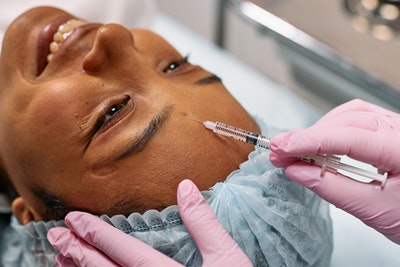Care for All: How Does Nurse-to-Patient Ratio Affect Seniors
 Nursing homes aren’t cheap.
Nursing homes aren’t cheap.
Indeed, a private room in a nursing home can cost almost $8,000 per month on average.
That’s a lot of money by anyone’s standards. It’s totally fair to expect a high degree of care in exchange.
Yet the US is currently facing a significant shortage of qualified nurses. There are currently 3.9 million nurses in America. However, that same study states that we need another one million of them by 2020 to prevent further shortages.
The lack of nurses is cause for concern in all areas of healthcare. But the impact on senior citizens in residential care homes can be particularly damaging.
The nurse to patient ratio has a significant impact on many aspects of care.
Keep reading to find out more.
What’s Nurse to Patient Ratio?
Nurse to patient ratio refers to the number of nurses working at any given time, compared to the number of residents.
It’s often expressed as a number. For instance, if there are 100 residents and 10 staff on shift, there’d be a ratio of 10:1 that day. A sufficiently high ratio is essential to sustain high care standards. More on this later.
However, it’s worth noting that there are far more nursing aids, or care workers, working shifts than actual nurses. A better indication of an adequate ratio is arguably derived from the total number of care staff working at one time.
Likewise, there are even fewer regulations in place in assisted living communities. Read this blog for more information on that topic.
Ratio Regulations
What do the regulations say about nurse-to-patient ratios?
According to Federal law, nursing homes must have a registered nurse working for a minimum of 8 hours every day of the week. There must also be a licensed nurse working 24 hours a day.
However, there are no legal guidelines for how many nursing aids should be at work. That’s a problem.
How Nurse to Patient Ratio Impacts Seniors
Let’s turn to the impact of a substandard nurse to patient ratio. What happens when there aren’t enough nurses to care for seniors?
Nurses Burnout
A lack of nursing staff has damaging consequences for all involved.
The residents in their charge are affected. But the nurses are too. Nurse burnout is one significant challenge that can arise. A shortage of nurses means greater workloads for those on shift. After all, the number of residents doesn’t change just because there aren’t enough people to care for them.
Yet the same standards of care are expected by all involved. This puts a weight of responsibility on an already dwindling workforce.
The emotional, mental and physical toll can lead to burnout. What happens when a nurse burns out? They can’t work. And that means even fewer nurses around. It’s a vicious cycle.
A staff member that’s overworked will have less time to administer care. The residents start to suffer too.
High Staff Turnover
Overworked and underappreciated staff don’t stick around.
Indeed, they may be forced to leave if they burn out.
High staff turnover can mean residents receive care from inexperienced nurses. It takes time to get to know and understand a person’s needs. Everyone is different and it’s impossible to treat everyone in the same way. Person-centered care calls for an individual approach to every single resident.
That standard becomes far harder to uphold when new staff is constantly brought in. They may not have adequate training, and they definitely won’t know the residents.
The constant change can be unsettling for everyone. After all, wouldn’t you prefer to receive care from someone who knows you, and appreciates your individual situation?
Care Standards Drop
The primary issue with subpar ratios is the impact it has on care standards.
It’s impossible to adhere to adequate levels of care when there’s insufficient staff. In any other profession, it would be unreasonable to ask someone to take on more work than is feasible.
But this is a regular occurrence in understaffed residential homes. Care standards are bound to suffer. You can’t spend enough time with each resident. You’re under time constraints. Remember, some medication must be administered carefully at set times.
It’s a matter of time before understaffed homes experience an emergency situation.
Care Isn’t Done At All
A worst case scenario is if care isn’t administered at all.
This only tends to happen in extreme cases. But negligence of this ilk isn’t unheard of.
Residents may not receive their personal care. Clothes may not be changed. Sores may not be dressed. Medication may not be administered. Life-threatening symptoms may not be picked up on.
It may be totally accidental. Sometimes jobs fall by the wayside when there isn’t anyone to do them, or if you’ve got a million tasks to handle at once.
Indeed, underpaid, overworked staff can become disillusioned with the role. The amount of effort can drop as the expectations and workload increases.
Higher Mortality Rates
Studies show that having higher numbers of nurses leads to reduced mortality in hospitals.
It’s arguable that the same would be true in nursing homes. After all, if care levels drop, medication isn’t administered, and neglect becomes a daily occurrence, then it’s only a matter of time before sickly residents start to die.
Of course, this is another worst case scenario. It’s a definite risk though.
Maintaining an adequate nurse to resident ratio may well save lives.
Time to Wrap Up
There you have it: exactly how nurse to patient ratio affects seniors.
The nurse to patient ratio describes the number of nurses working in relation to the number of residents. However, the number of nursing aids is unregulated by federal law and is arguably more important in maintaining care standards.
A lack of staff in nursing homes has all sorts of negative effects. Nurses and their aids burnout as the pressure and workload increases. More burnouts lead to higher staff turnover, which can disrupt care and be unsettling for residents.
Care standards are likely to drop. In some cases, care may be lacking completely. Finally, in worst-case-scenarios, nursing homes may experience higher mortality rates.
As you can see, it’s of utmost importance that staffing levels are high enough. Be sure to inquire about staff to resident ratios when looking into nursing homes for your loved ones.
Did you enjoy this piece? Check out how to decide between home care and assisted living right here.






